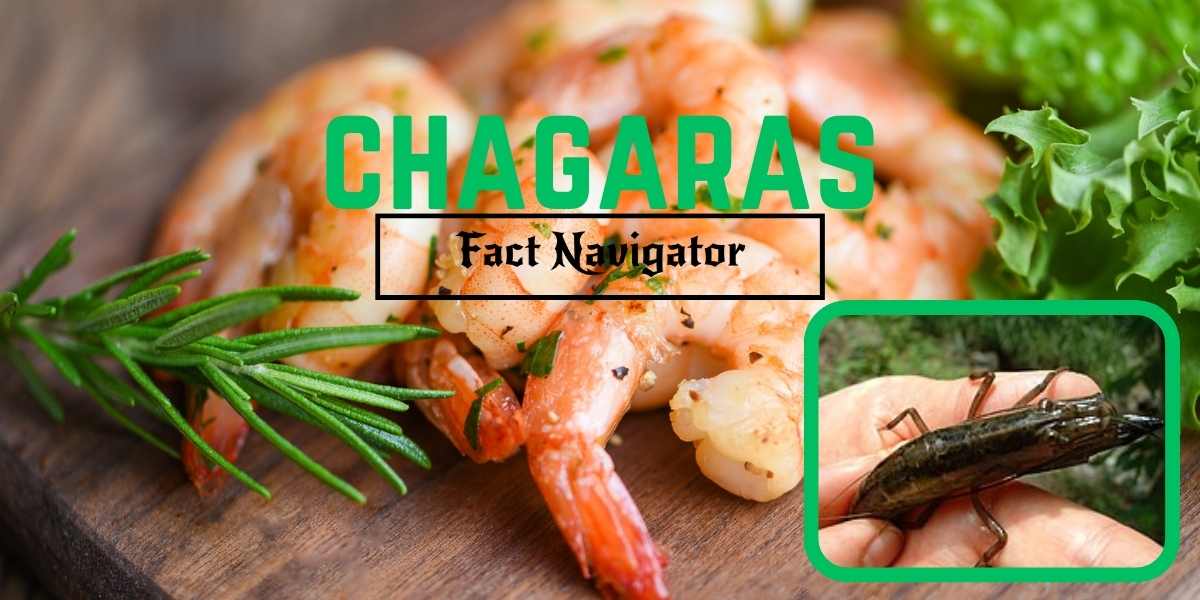Chagaras: Puerto Rico’s Freshwater Shrimp Delicacy

If you’ve ever stumbled upon Puerto Rican cuisine, you might have encountered the intriguing delicacy known as chagaras. These freshwater treasures are not only a culinary delight but also an integral part of the island’s ecosystem. Let’s dive into the world of chagaras and discover what makes them so special.
1. What Exactly Are Chagaras?
Chagaras are a species of freshwater shrimp belonging to the Atyidae family and the genus Atya. Their scientific name is Atya lanipes. They are not your typical saltwater shrimp but thrive in the rivers and streams of tropical regions.
These Freshwater shrimps are relatively small, usually measuring between 2-3 inches in length. Their bodies are translucent with hints of brown or green, allowing them to blend seamlessly into their environment. A notable feature is their long, spindly legs and delicate claws used for foraging and defense.
2. Where Do Chagaras Live?
Chagaras are primarily found in the Caribbean islands, with Puerto Rico being a hotspot. They favor clear, slow-moving freshwater streams and rivers with ample vegetation and rocky crevices to hide. You might find them clinging to rocks or scurrying among submerged plants.
These Caribbean shrimps are fascinating creatures to observe. They are primarily nocturnal, becoming more active during the night to feed. Their long legs help them navigate the riverbed, while their claws allow them to scavenge for food like algae, decaying plant matter, and even small insects. These Tropical shrimps play a vital role in maintaining the ecological balance of their freshwater habitats.
Also Read: SpicyRranny: Unleash Exotic Flavors In Your Kitchen
3. Chagaras in Puerto Rican Culture
For centuries, chagaras have held a special place in Puerto Rican hearts and kitchens. Their unique flavor and connection to the island’s natural landscape make them a cherished culinary and cultural symbol.
Culinary Significance
Traditional preparation methods (frying, stews, etc.)
Chagaras shine in a variety of traditional Puerto Rican dishes. One popular method is simply frying them in hot oil until crispy and golden, often seasoned with salt, pepper, and garlic. They are also a delicious addition to stews like asopao, a hearty rice stew packed with vegetables and often seafood. Some adventurous cooks incorporate shrimps into fritters or empanadas for a flavorful twist.
Flavor profile
Chagaras have a mild, sweet, and slightly nutty flavor reminiscent of other shrimp but with a distinct freshwater earthiness. Their texture is delicate and tender, making them a delight to eat.
Where to find chagaras in Puerto Rican cuisine
While not as widespread as saltwater seafood, chagaras are still found in various settings in Puerto Rico. You might spot them on the menus of traditional restaurants specializing in local cuisine, particularly in inland areas near rivers. Some local markets, especially those near fishing communities, may carry fresh or frozen shrimps.
Folklore and Stories
While there might not be extensive mythological tales directly focused on chagaras, they are deeply embedded in the folklore of Puerto Rican rivers and streams. Stories of river spirits or enchanted creatures often feature the bounty of the freshwater ecosystem, and these shrimps would undoubtedly be part of this rich tapestry of oral traditions. It highlights the connection between the natural world and Puerto Rican cultural identity.
4. Finding and Preparing Your Own Chagaras
The thrill of catching and cooking your own chagaras truly elevates this culinary experience. Let’s explore how to source them responsibly and turn them into delicious dishes.
Sourcing Chagaras
Can you fish for them yourself? Licensing and regulations
In Puerto Rico, you can fish for chagaras, but it’s essential to have a valid fishing license. Always check with the Puerto Rico Department of Natural and Environmental Resources (https://www.drna.pr.gov/) for the most up-to-date regulations, specific restrictions, and any closed seasons.
Purchasing fresh or frozen chagaras
If fishing isn’t your forte, inquire at local markets in Puerto Rico, especially near rivers or coastal areas. Some specialty seafood shops may carry them either fresh or frozen.
Cleaning and Preparation Tips
- Rinse Thoroughly: Give your chagaras a good rinse in cold water to remove any debris.
- Remove Heads (Optional): While you can cook these shrimps whole, some prefer to remove the heads as they might contain some bitterness.
- Pat Dry: Before cooking, gently pat the chagaras dry with paper towels.
Popular Chagara Recipes
- 1. Camarones Fritos:
- Ingredients: chagaras, salt, black pepper, garlic powder, oil for frying
- Instructions: Season shrimps liberally. Heat oil in a pan and fry until golden and crispy. Drain on paper towels, and enjoy!
- 2. Asopao de Chagaras:
- Ingredients: chagaras, olive oil, onion, garlic, bell pepper, tomato, sofrito (Puerto Rican seasoning base), rice, broth, olives, capers, spices.
- Instructions: Sauté vegetables, add sofrito, shrimps, rice, broth, and seasonings. Simmer until rice is cooked and flavors meld.
- 3. Empanadillas de Chagaras:
- Ingredients: chagaras, premade empanada dough, onion, garlic, tomato, spices, oil.
- Instructions: Sauté the filling ingredients. Fill empanada dough circles, seal, and fry or bake until golden.
Also Read: Intrepidfood.Eu: Your EU Food Guide | Safety, Recipes, More
5. Beyond the Plate: Interesting Facts about Chagaras
Chagaras aren’t just a tasty treat; they’re remarkable creatures with fascinating stories to tell. Let’s uncover some of their hidden secrets.
Ecological Importance
Caribbean shrimps are a vital part of their freshwater habitats. As scavengers, they help keep rivers and streams clean by consuming decaying matter. They’re also a food source for larger fish and birds, helping to maintain a balanced food web. Their presence can be an indicator of good water quality in their environment.
Did You Know?
- Masters of Disguise: Their translucent bodies and long legs help chagaras blend seamlessly with rocks and plants, making them excellent at evading predators.
- Filter Feeders: Chagaras have specialized fan-like structures near their mouths that help them filter tiny food particles from the water.
- Migration Patterns: Some species of Atya lanipes are known to migrate between freshwater and saltwater during different stages of their life cycle.
- Potential for Aquaculture Due to their relatively simple dietary needs, chagaras could have potential in sustainable aquaculture practices, providing an alternative food source while supporting ecological balance.
6. Potential Health Benefits of Eating Chagaras
While there isn’t extensive research specifically focused on chagaras, they likely share a similar nutritional profile to other freshwater and saltwater shrimp. Here’s how consuming chagaras could contribute to a healthy diet:
- Source of Protein: Chagaras, like most shrimp, provide lean protein. Protein is essential for tissue growth and repair, keeping you feeling full and satisfied.
- Minerals: Chagaras offer minerals like iodine, selenium, zinc, and copper. These minerals play important roles in immune function, thyroid health, and other bodily processes.
- Possible Omega-3 Source: Some shrimp contain omega-3 fatty acids, beneficial for heart health. While freshwater shrimp might have lower amounts, it’s worth noting.
- Part of a Balanced Diet: Chagaras shouldn’t be seen as a superfood. However, they can add variety and nutritional value to a well-rounded diet focused on whole foods.
Important Considerations:
- Allergies: If you’re allergic to shellfish, chagaras could trigger a reaction. Always be aware of potential food allergies.
- Sustainability: Choosing sustainably caught or sourced chagaras supports both environmental health and the longevity of this food source.
Remember: Always consult a doctor or registered dietician for personalized dietary and health advice.
Conclusion
Chagaras are far more than just a meal; they are a window into Puerto Rico’s rich natural heritage and culinary traditions. From their sweet, delicate flavor to the stories they carry of freshwater ecosystems, they offer an adventure for your taste buds and your understanding of the island’s culture.
Why You Should Try These Caribbean shrimp
- Unique Flavor Experience: If you enjoy seafood and are curious about lesser-known delicacies, chagaras are a must-try. Their mild yet distinct flavor offers a fresh perspective on shrimp.
- Support Local Communities: By seeking out Puerto Rican shrimp, you contribute to the livelihoods of local fishers and vendors in Puerto Rico.
- Culinary Adventure: Trying chagaras adds an exciting element to your Puerto Rican food journey and expands your culinary horizons.
Experience a Unique Taste of Puerto Rico
Whether you catch them yourself or find them at a local restaurant, chagaras are a delicious way to connect with the vibrant culture and natural beauty of Puerto Rico. Don’t miss out on this opportunity to taste a hidden gem of the Caribbean!





